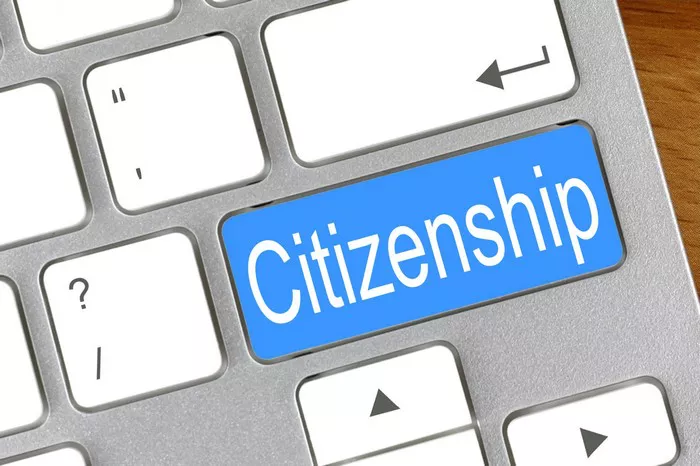Understanding your citizenship status is crucial for accessing various rights and privileges. Whether you need to verify your status for travel, employment, or personal reasons, the process can seem daunting. This article provides a comprehensive guide to help you check your citizenship status.
Understanding Citizenship
Citizenship is the legal relationship between an individual and a state. It comes with certain rights and responsibilities. These include the right to vote, work, and live in the country, and the obligation to obey laws and pay taxes. Citizenship can be acquired by birth, descent, marriage, or naturalization.
1. Different Types of Citizenship
Birthright Citizenship: Acquired by being born within a country’s territory.
Descent: Acquired through parents or grandparents who are citizens.
Naturalization: Acquired by fulfilling residency and other requirements.
Marriage: Acquired through marriage to a citizen of a country.
2. Why Check Your Citizenship Status?
Knowing your citizenship status is important for several reasons. It can determine your eligibility for government services, ability to travel, and right to work. Misunderstanding your status can lead to legal complications.
Documents Required to Check Citizenship Status
To verify your citizenship status, you may need several documents. These include:
- Birth Certificate: Proves birth within a country.
- Passport: Valid proof of citizenship.
- Naturalization Certificate: Proof of acquired citizenship.
- Citizenship Certificate: Proof of citizenship through descent or other means.
- Marriage Certificate: Required if citizenship was acquired through marriage.
Step-by-Step Guide to Check Your Citizenship Status
1. Gather Necessary Documents
Before you begin, ensure you have all necessary documents. These may include:
- Birth Certificate: If you were born in the country.
- Passport: A valid passport is strong evidence of citizenship.
- Naturalization Certificate: If you became a citizen through naturalization.
- Citizenship Certificate: If you acquired citizenship through descent.
- Marriage Certificate: If citizenship was acquired through marriage.
2. Visit Government Websites
Most countries have official government websites with information on how to check citizenship status. For example:
- United States: Visit the U.S. Citizenship and Immigration Services (USCIS) website.
- Canada: Visit the Immigration, Refugees and Citizenship Canada (IRCC) website.
- United Kingdom: Visit the UK Visas and Immigration (UKVI) website.
3. Contact Government Agencies
If you cannot find the information you need online, contact government agencies directly. Examples include:
- Department of State: For passport-related queries.
- Department of Homeland Security: For immigration-related queries.
- Local Consulate or Embassy: For assistance if you are outside your country.
4. Consult an Immigration Lawyer
If you encounter any difficulties, consider consulting an immigration lawyer. They can provide expert advice and help you navigate complex situations.
Special Cases
1. Lost or Missing Documents
If you have lost any documents, take the following steps:
- Report the Loss: Inform the relevant authorities immediately.
- Apply for Replacements: Submit an application for replacement documents.
- Provide Proof of Identity: Be prepared to provide other forms of identification.
2. Dual or Multiple Citizenship
If you hold dual or multiple citizenships, you may need to check your status in more than one country. Follow the steps for each country where you hold citizenship.
3. Revoked or Renounced Citizenship
If your citizenship was revoked or you renounced it, contact the relevant authorities for confirmation. You may need to provide documentation of the revocation or renunciation process.
4. Online Tools and Resources
Many countries offer online tools and resources to check citizenship status. Examples include:
- USCIS Case Status Online: Check the status of your citizenship application.
- IRCC Online Services: Access various online tools related to Canadian citizenship.
- UKVI Online Services: Check your status and access other services online.
SEE ALSO: HOW TO CHECK VISA STATUS ONLINE: A COMPREHENSIVE GUIDE
Common Issues and Solutions
1. Application Delays
If your citizenship application is delayed, take the following steps:
Check Application Status: Use online tools or contact the relevant agency.
Follow Up: Regularly follow up with the agency handling your application.
Seek Legal Advice: If delays persist, consult an immigration lawyer.
2. Discrepancies in Records
If there are discrepancies in your records, address them promptly:
Identify the Discrepancy: Determine what the issue is.
Gather Evidence: Collect any evidence that supports your claim.
Contact Authorities: Inform the relevant authorities and provide evidence.
Correct Records: Follow the process to correct any errors in your records.
3. Change of Name or Personal Information
If you have changed your name or other personal information, update your records:
Provide Legal Documentation: Submit legal documentation of the change.
Update All Records: Ensure all relevant records are updated.
Notify Relevant Authorities: Inform government agencies and other relevant organizations.
Conclusion
Checking your citizenship status is a crucial step in ensuring your rights and privileges. By following the steps outlined in this article, you can navigate the process with confidence. Remember to gather all necessary documents, utilize online resources, and seek professional advice if needed. Understanding your citizenship status will help you access the services and opportunities available to you.


